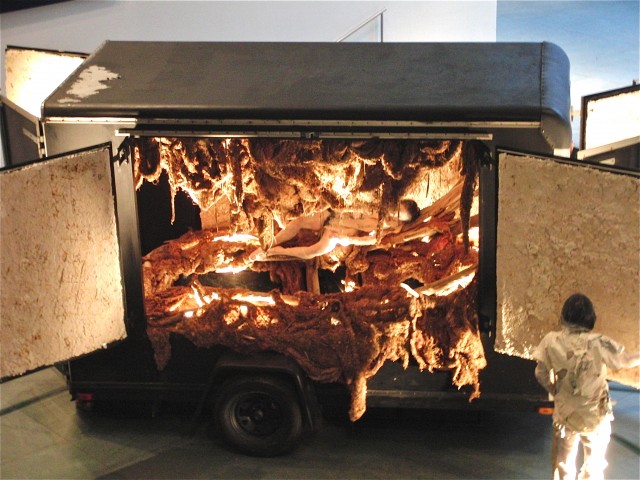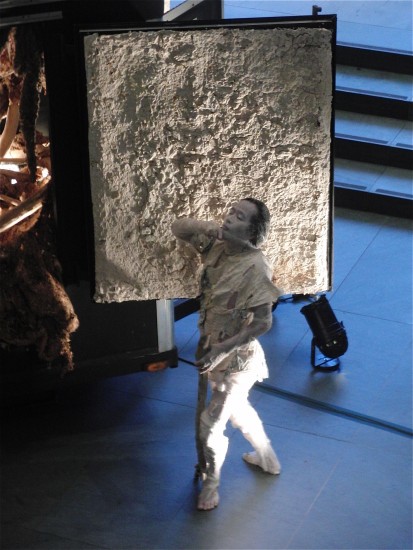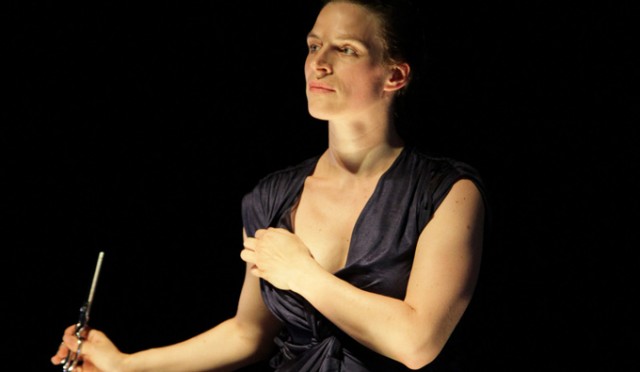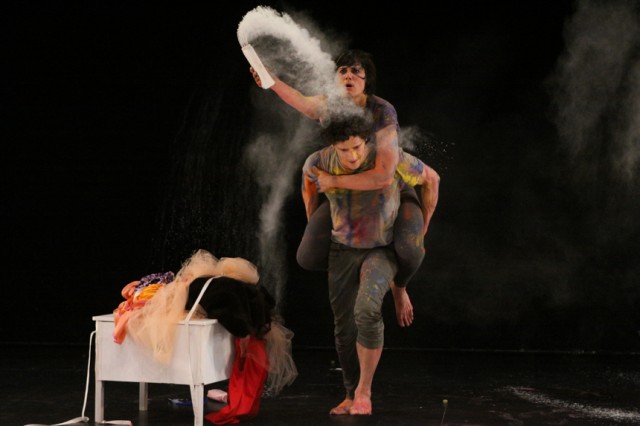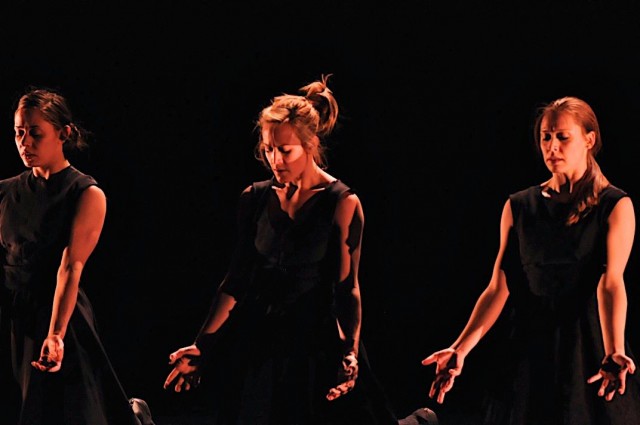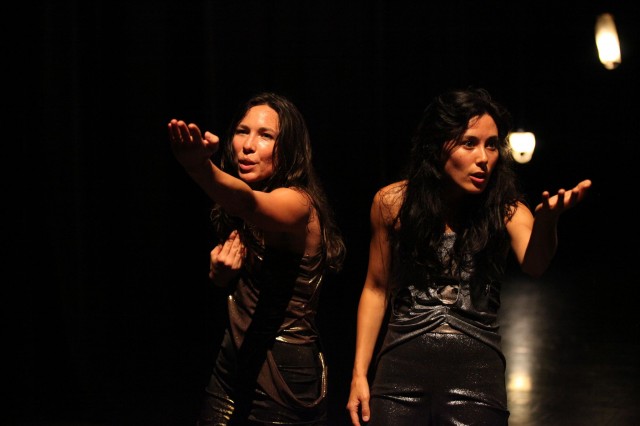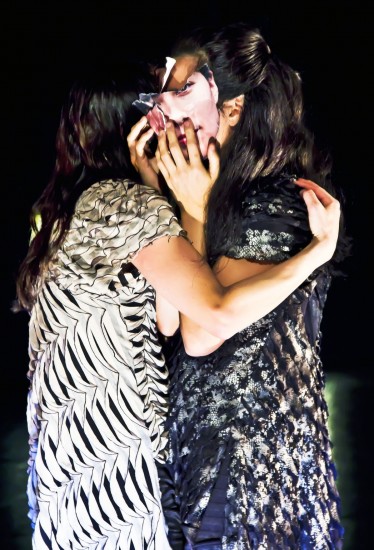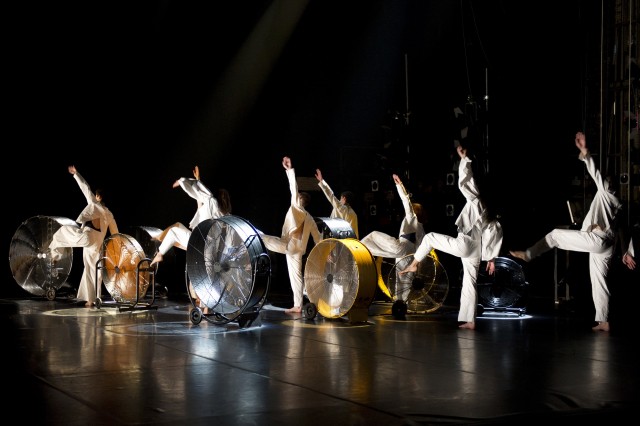
New York premiere of “I’m going to toss my arms—if you catch them they’re yours” is part of Trisha Brown Dance Company program at BAM (photo by Laurent Philippe)
BAM Howard Gilman Opera House
30 Lafayette Ave. between Ashland Pl. & St. Felix St.
January 30 – February 2, $20-$70, 7:30
718-636-4100
www.bam.org
www.trishabrowncompany.org
This past fall, BAM bid farewell to Pina Bausch as Tanztheater Wuppertal presented the final work by the legendary German choreographer, “…como el musguito en la piedra, ay si, si, si…” (Like moss on a stone), who died in 2009 at the age of sixty-nine. Now BAM is saying goodbye to another dance master as Trisha Brown brings her last two pieces to the Howard Gilman Opera House from January 30 to February 2. Now seventy-six, the Washington State-born Brown has been presenting dance at BAM since January 1976. How to describe her eclectic style? In fall 1993, influential multimedia artist and choreographer Yvonne Rainer wrote in BOMB magazine, “The task of describing Trisha Brown’s unique form of dancing is daunting. Its inscrutable blend of zaniness, athleticism, delicacy, and logic, always evading mimetic clichés, similarly eludes language, like a half-forgotten word or phrase that can’t quite roll off the tip of the tongue.” The Trisha Brown Dance Company will be performing two programs at BAM. The first (January 30, February 1-2) consists of 1987’s Newark (Niweweorce), featuring audiovisual elements by minimalist Donald Judd and Peter Zummo and lighting by Ken Tabachnick; the New York premiere of Les Yeux et l’âme, set to music by William Christie and Les Arts Florissants from Jean-Philippe Rameau’s Pygmalion, with lighting by Jennifer Tipton and costumes by Elizabeth Cannon; the New York premiere of I’m going to toss my arms—if you catch them they’re yours, with video by Burt Barr, costumes by Kaye Voyce, and lighting by John Torres, set to Alvin Curran’s “Toss and Find”; and 1966’s Homemade, a solo danced by Vicky Shick, with an original film by theatrical happenings mainstay Robert Whitman. The second program (January 31) comprises Newark (Niweweorce), I’m going to toss my arms—if you catch them they’re yours, Homemade, and the thirtieth-anniversary presentation of the 1983 BAM commission Set and Reset, a collaboration with Laurie Anderson, Robert Rauschenberg, and Beverly Emmons. The company features Neal Beasley, Cecily Campbell, Tara Lorenzen, Megan Madorin, Leah Morrison, Tamara Riewe, Jamie Scott, Stuart Shugg, Nicholas Strafaccia, and Samuel Wentz. In conjunction with the performances, John Rockwell, Wendy Perron, and Stephen Petronio will participate in an “Iconic Artist Talk: On Trisha Brown” on February 2 at 5:00 at the BAM Fisher Fishman Space.
